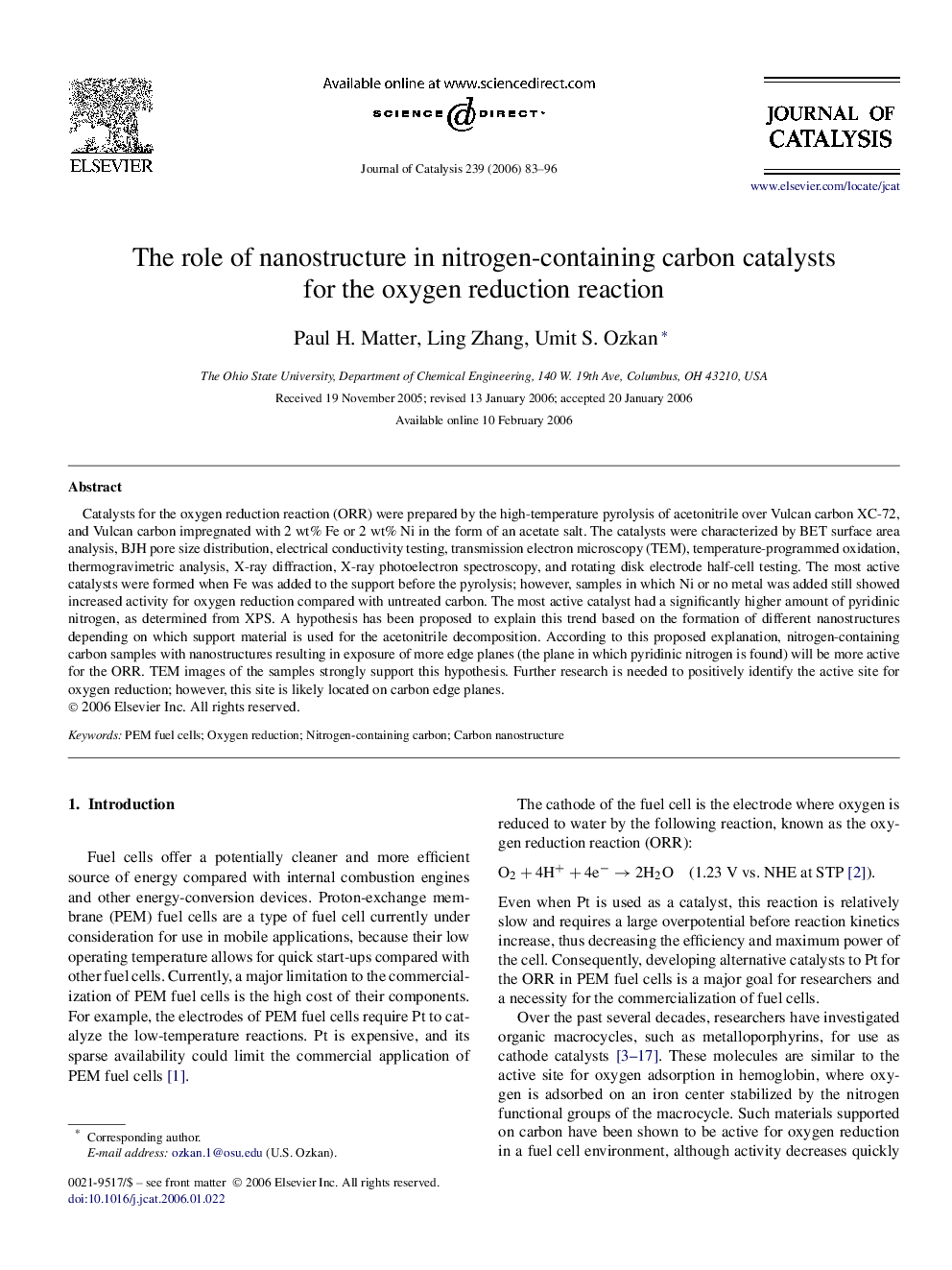| Article ID | Journal | Published Year | Pages | File Type |
|---|---|---|---|---|
| 63365 | Journal of Catalysis | 2006 | 14 Pages |
Catalysts for the oxygen reduction reaction (ORR) were prepared by the high-temperature pyrolysis of acetonitrile over Vulcan carbon XC-72, and Vulcan carbon impregnated with 2 wt% Fe or 2 wt% Ni in the form of an acetate salt. The catalysts were characterized by BET surface area analysis, BJH pore size distribution, electrical conductivity testing, transmission electron microscopy (TEM), temperature-programmed oxidation, thermogravimetric analysis, X-ray diffraction, X-ray photoelectron spectroscopy, and rotating disk electrode half-cell testing. The most active catalysts were formed when Fe was added to the support before the pyrolysis; however, samples in which Ni or no metal was added still showed increased activity for oxygen reduction compared with untreated carbon. The most active catalyst had a significantly higher amount of pyridinic nitrogen, as determined from XPS. A hypothesis has been proposed to explain this trend based on the formation of different nanostructures depending on which support material is used for the acetonitrile decomposition. According to this proposed explanation, nitrogen-containing carbon samples with nanostructures resulting in exposure of more edge planes (the plane in which pyridinic nitrogen is found) will be more active for the ORR. TEM images of the samples strongly support this hypothesis. Further research is needed to positively identify the active site for oxygen reduction; however, this site is likely located on carbon edge planes.
